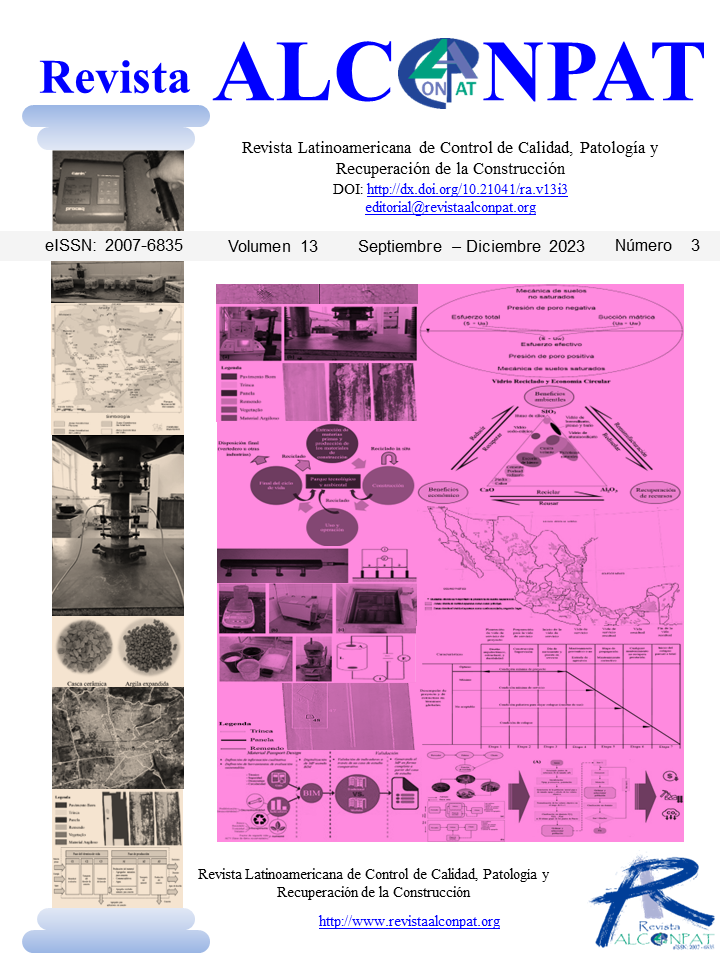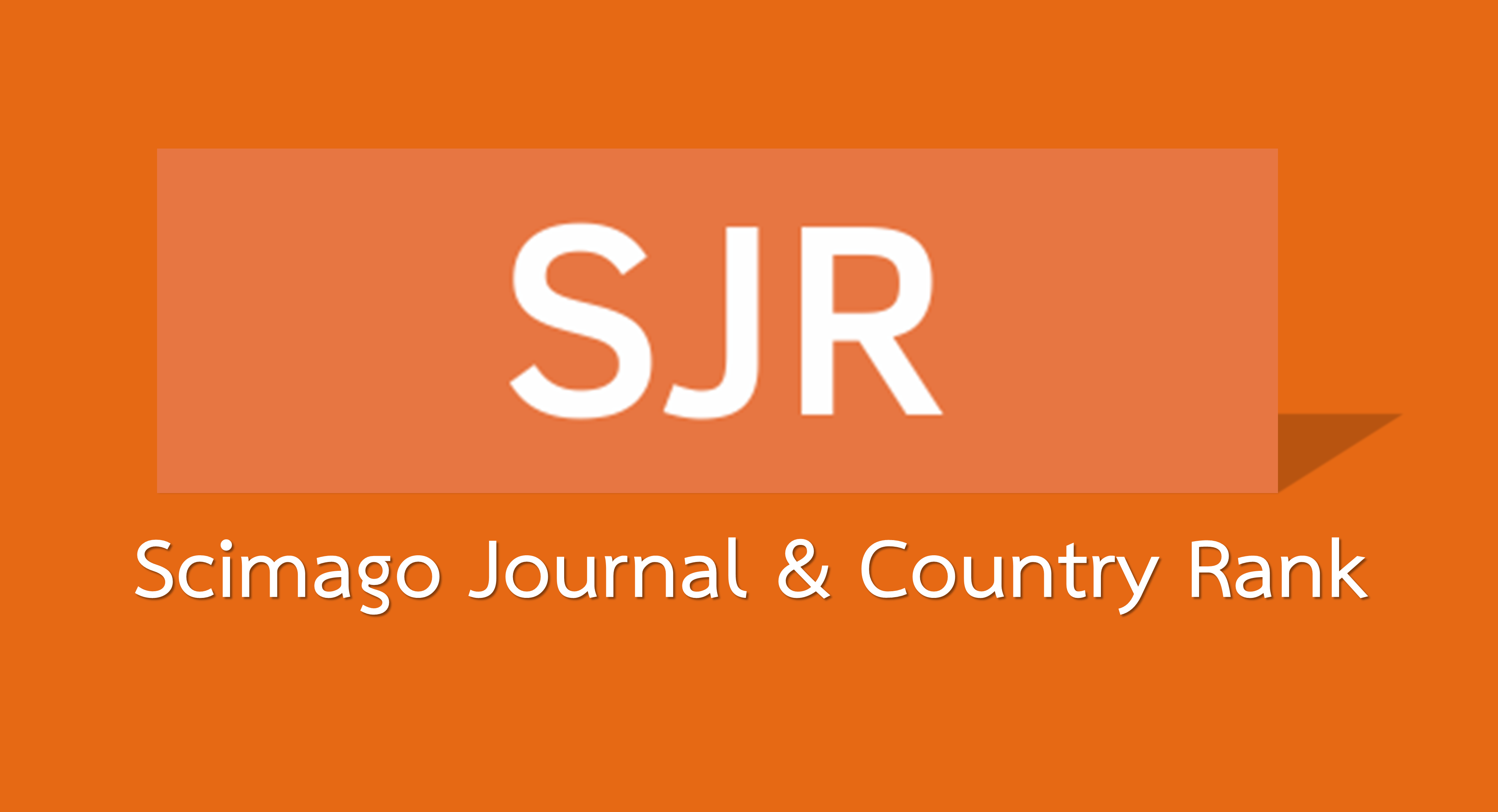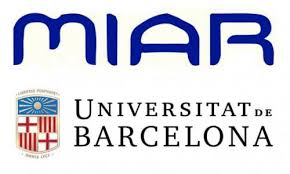Circular economy in the Latin American cement and concrete industry: a sustainable solution of design, durability, materials, and processes
DOI:
https://doi.org/10.21041/ra.v13i3.697Keywords:
circular economy; sustainability; cement and concrete industry; efficient design; durability.Abstract
Conventional models of production in the cement and concrete industry (CCI) associate important environmental problems; on the other hand, there are emerging technologies that could reduce them. However, the multidimensional approach of the circular economy is required to guide sustainable development in a lasting manner, modeling the life cycle from design to final disposal aiming to optimize the value-environmental impact relationship; since only a circular, resilient, and proactive industry can meet the 2030 Agenda of sustainable development (ONU) or the goal of zero emissions. This work presents general concepts of circular economy, as well as an analysis of alternatives and applicability in order to raise awareness among CCI actors in Latin America.
Downloads
References
Adesina, A. (2020), Recent advances in the concrete industry to reduce its carbon dioxide emissions. Env. Challen. 1:100004. https://doi.org/10.1016/j.envc.2020.100004
Adesina, A. (2021). Circular Economy in the Concrete Industry, en: Baskar, C., Ramakrishna, S., Baskar, S., Sharma, R., Chinnappan, A., Sehrawat, R. “Handbook of Solid Waste Management”, Singapore, Springer. https://doi.org/10.1007/978-981-15-7525-9_64-1
Akchurin, T. K., Tukhareli, V. D., Yu., O., Pushkarskaya (2016), The Modifying Additive for Concrete Compositions Based on the Oil Refinery Waste. Proc. Eng. 150:1485-1490. https://doi.org/10.1016/j.proeng.2016.07.087
Al-Hamrani, A., Kucukvar, M., Alnahhal, W., Mahdi, E., Onat, N. C. (2021), Green Concrete for a Circular Economy: A Review on Sustainability, Durability, and Structural Properties. Maters. 14(2):351. https://doi.org/10.3390/ma14020351
Al-mousa, E. M., Al-Zboon, K.K. (2022), Recycling of Nano Silica Waste from Aluminum Fluoride Industry in Cement Mortar. J. Sol. Was. Tech. Manag. 48(3):459-464. https://doi.org/10.5276/JSWTM/2022.459
Al-Sinan, M. A., Bubshait, A. A. (2022), Using Plastic Sand as a Construction Material toward a Circular Economy: A Review. Sust. 14(11):6446. https://doi.org/10.3390/su14116446
Althoey, F., Zaid, O., de-Prado-Gil, J., Palencia, C., Ali, E., Hakeem, I., Martínez-García, R. (2022), Impact of sulfate activation of rice husk ash on the performance of high strength steel fiber reinforced recycled aggregate concrete. J. Build. Eng. 54:104610. https://doi.org/10.1016/j.jobe.2022.104610
Amaral, L. P., Martins, N., Gouveia, J.B. (2016), A review of emergy theory, its application and latest developments. Ren. Sust. Ene. Rev. 54:882-888. https://doi.org/10.1016/j.rser.2015.10.048
Anastasiades, K., Blom, J., Buyle, M., Audenaert, A. (2020), Translating the circular economy to bridge construction: Lessons learnt from a critical literature review. Ren. & Sust. Ene. Rev. 117:109522. https://doi.org/10.1016/j.rser.2019.109522
Ariza-Figueroa, H. A., Bosch, J., Baltazar-Zamora, M. A., Croche, R., Santiago-Hurtado, G., Landa-Ruiz, L., Mendoza-Rangel, J. M., Bastidas, J. M., Almeraya-Calderón, F., Bastidas, D. M. (2020), Corrosion Behavior of AISI 304 Stainless Steel Reinforcements in SCBA-SF Ternary Ecological Concrete Exposed to MgSO4. Maters. 13(10):2412. https://doi.org/10.3390/ma13102412
Atta, I., Bakhoum, E. S., Marzouk, M. M. (2021), Digitizing material passport for sustainable construction projects using BIM. J. Build. Eng. 43:103233. https://doi.org/10.1016/j.jobe.2021.103233
Barreto, E. S., Stafanato, K. V., Marvila, M. T., Garcez de Azevedo, A. R., Ali, M., Pereira, R. M. L., Monteiro S. N. (2021), Clay Ceramic Waste as Pozzolan Constituent in Cement for Structural Concrete. Maters. 14(11):2917. https://doi.org/10.3390/ma14112917
Bourke, K., Kyle, B. (2019), Service life planning and durability in the context of circular economy assessments — initial aspects for review. Can. J. Civ. Eng. 46(11):1074-1079. https://doi.org/10.1139/cjce-2018-0596
Caldas, L. R., Saraiva, A. B., Lucena, A. F. P., Da Gloria, M. Y., Santos, A. S., Filho, R. D. T. (2021), Building materials in a circular economy: The case of wood waste as CO2-sink in bio concrete. Res. Cons. Recyc. 166:105346. https://doi.org/10.1016/j.resconrec.2020.105346
Camilleri, M. A. (2020), European environment policy for the circular economy: Implications for business and industry stakeholders. Sust. Dev. 28(6):1804-1812. https://doi.org/10.1002/sd.2113
Castro-Borges, P., Helene, P. (2007), Service Life of Reinforced Concrete Structures. New Approach. in Corrosion of Infrastructure. Cancun, México: ECS Transactions.
Chakartnarodom, P., Wanpen, S., Prakaypan, W., Laitila, E. A., Kongkajun N. (2022), Development of High-Performance Fiber Cement: A Case Study in the Integration of Circular Economy in Product Design. Sust. 14(19):12263. https://doi.org/10.3390/su141912263
Chatterjee, A. Sui, T. (2019), Alternative fuels – Effects on clinker process and properties. Cem. Concr. Res. 123:105777. https://doi.org/10.1016/j.cemconres.2019.105777
Colangelo, F., Navarro, T. G., Farina, I., Petrillo A. (2020), Comparative LCA of concrete with recycled aggregates: a circular economy mindset in Europe. Inter. J. of LCA. 25:1790-1804. https://doi.org/10.1007/s11367-020-01798-6
Colorado, H. A., Velásquez, E. I. G. Monteiro, S. N. (2020), Sustainability of additive manufacturing: the circular economy of materials and environmental perspectives. J. Mater. Res. Tech. 9(4):8221-8234. https://doi.org/10.1016/j.jmrt.2020.04.062
Contrafatto, L. (2017), Recycled Etna volcanic ash for cement, mortar and concrete manufacturing. Constr. Build. Maters. 151:704-713. https://doi.org/10.1016/j.conbuildmat.2017.06.125
Corvellec, H., Stowell, A. F., Johansson, N., (2022). Critiques of the circular economy. J. Indus. Eco. 26(2):421-432. https://doi.org/10.1111/jiec.13187
Cosentino, I., Liendo, F., Arduino, M., Restuccia, L., Bensaid, S., Deorsol, F., Ferro, G. A. (2020), Nano CaCO3 particles in cement mortars towards developing a circular economy in the cement industry. Proc. Struc. Int. 26:155-165. https://doi.org/10.1016/j.prostr.2020.06.019
Delwar, M., Fahmy, M., Taha, R. (1997), Use of Reclaimed Asphalt Pavement as an Aggregate in Portland Cement Concrete. Maters. J. 94(3):251-256. https://doi.org/10.14359/306
Díaz-Aguilera, J. H., Rodríguez-Reyna, S. L., Flores-Véles, L. M., Dominguez, O. (2021), Improvement of Mechanical Behavior of Rubber–Cement Mortars by Catalytic Hydration. J. Mater. Civ. Eng. 33(10):04021282. https://doi.org/10.1061/(ASCE)MT.1943-5533.0003897
Dikshit, A. K., Sahoo, B. B., Gupta, S. K., Chaturvedi, S. K. (2022). “A study on utilization of paper mill lime sludge in the manufacture of cement under circular economy” in: International Conference on Cement, Concrete and Building Materials, 17th National Council for Cement and Building Materials, New Dheli (India), pp. 1-6.
Fay, L., Cooper, P., de Morais, H. F. (2014), Innovative interlocked soil–cement block for the construction of masonry to eliminate the settling mortar. Constr. Build. Maters. 52:391-395. https://doi.org/10.1016/j.conbuildmat.2013.11.030
Fort, J., Cerny, R. (2020), Transition to circular economy in the construction industry: Environmental aspects of waste brick recycling scenarios. Was. Manag. 118:510-520. https://doi.org/10.1016/j.wasman.2020.09.004
Gallaud, D., Laperche, B. (2016), “Circular Economy, Industrial Ecology and Short Supply Chain”. John Wiley & Sons Inc, London, U.K.
Geisendorf, S., Pietrulla, F. (2018), The circular economy and circular economic concepts—a literature analysis and redefinition. Thund. Inter. Buiss. Rev. 60(5):771-782. https://doi.org/10.1002/tie.21924
Ghosh, S. K., Kumar, V. (2020), “Circular Economy and Fly Ash Management”. Springer, Singapore, 2020.
Global Cement and Concrete Association (GCCA) (2023), GCCA and FICEM Take Next Steps to Accelerate Regional Net Zero Progress at LatAm and the Caribbean Climate Week. Accedido el 8 de junio de 2023 en: https://gccassociation.org/news/gcca-and-ficem-take-next-steps-to-accelerate-regional-net-zero-progress-at-latam-and-the-caribbean-climate-week/
González-Domínguez, J., Sánchez-Barroso, G., Zamora-Polo, F., García-Sanz-Calcedo, J. (2020), Application of Circular Economy Techniques for Design and Development of Products through Collaborative Project-Based Learning for Industrial Engineer Teaching. Sust. 12(11):4368. https://doi.org/10.3390/su12114368
Guimarães, A. S., Delgado, J. M. P. Q., Lucas S. S. (2021), Additive Manufacturing on Building Construction. Def. Dif. For. 412:207–216. https://doi.org/10.4028/www.scientific.net/ddf.412.207
Hamam, M., Chinnici, G., Di Vita, G., Pappalardo, G., Pecorino, B., Maesano, G., D’Amico, M. (2021), Circular Economy Models in Agro-Food Systems: A Review. Sust. 13(6):3453. https://doi.org/10.3390/su13063453
Hanif, M., Agarwal, R., Sharma, U., Thapliyal, P. C., Singh, L. P. (2023), A review on CO2 capture and sequestration in the construction industry: Emerging approaches and commercialised technologies. J CO2 Util. 67:102292. https://doi.org/10.1016/j.jcou.2022.102292
Hentges, T. I., da Motta, E. A. M., Fantin, T. V. L., Moraes, D., Fretta, M. A., Pinto, M. F., Böes, J. S. (2021), Circular economy in Brazilian construction industry: Current scenario, challenges and opportunities. Was. Manag. Res. 40(6):642-653. https://doi.org/10.1177/0734242X211045014
Hossain, M. U., Ng, S. T., Antwi-Afari, P., Ben Amor (2020), Circular economy and the construction industry: Existing trends, challenges and prospective framework for sustainable construction. Ren. Sust. Ener. Rev. 130:109948. https://doi.org/10.1016/j.rser.2020.109948
Iacovidou, E., Millward-Hopkins, J., Busch, J., Purnell, P., Velis, C. A., Hahladakis, J. N., Zwirner, O., Brown, A. (2017), A pathway to circular economy: Developing a conceptual framework for complex value assessment of resources recovered from waste. J. Clean. Prod. 168:1279-1288. https://doi.org/10.1016/j.jclepro.2017.09.002
Juárez-Alvarado, C. A., Magniont, C., Escadeillas, G., Terán-Torres, B. T., Rosas-Díaz, F., Valdez-Tamez, P. L. (2020), Sustainable Proposal for Plant-Based Cementitious Composites, Evaluation of Their Mechanical, Durability and Comfort Properties. Sust. 14:14397. https://doi.org/10.3390/su142114397
Kaliyavaradhan, S. K., Tung-Chai, L., Mo, K. H. (2020), CO2 sequestration of fresh concrete slurry waste: Optimization of CO2 uptake and feasible use as a potential cement binder. J. CO2 Util. 42:101330. https://doi.org/10.1016/j.jcou.2020.101330
Karlsson, I., Rootzén, J., Johnsson, F. (2020), Reaching net-zero carbon emissions in construction supply chains – Analysis of a Swedish road construction project. Ren, Sust. Ene. Rev. 120:109651.
https://doi.org/10.1016/j.rser.2019.109651
Kosmatka, S. H., Wilson, M. L. (2004), “Design and control of concrete mixtures”, Portland Cement Association, Illinois, USA.
Lederer, J., Gassner, A., Kleemann, F., Fellner J., (2020), Potentials for a circular economy of mineral construction materials and demolition waste in urban areas: a case study from Vienna. Res. Cons. Recy. 161:104942. https://doi.org/10.1016/j.resconrec.2020.104942
Liew, K. M., Akbar, A. (2020), The recent progress of recycled steel fiber reinforced concrete. Constr. Build. Maters. 232:117232. https://doi.org/10.1016/j.conbuildmat.2019.117232
Linek, M., Bacharz, M., Piotrowska, P. (2023), Surface Cement Concrete with Reclaimed Asphalt. Maters. 16(7):2791. https://doi.org/10.3390/ma16072791
Londoño, N. A. C., Cabezas, H. (2021), Perspectives on circular economy in the context of chemical engineering and sustainable development. Cur. Opin. Chem. Eng. 34:100738. https://doi.org/10.1016/j.coche.2021.100738
Marsh, A. T. M., Velenturf, A. P. M., Bernal, S. A. (2022), Circular Economy strategies for concrete: implementation and integration. J. Clean. Produc. 362:132486. https://doi.org/10.1016/j.jclepro.2022.132486
Mathews, J. A., Tan, H. (2011), Progress Toward a Circular Economy in China: The Drivers (and Inhibitors) of Eco-industrial Initiative. J. Ind. Eco. 15(3):435-457. https://doi.org/10.1111/j.1530-9290.2011.00332.x
Maury-Ramírez, A., Illera-Perozo, D., Mesa, J. A. (2022), Circular Economy in the Construction Sector: A Case Study of Santiago de Cali (Colombia). Sust. 14(3):1923. https://doi.org/10.3390/su14031923
Minunno, R., O’Grady, T., Morrison, G. M., Gruner, R. L., Colling, M. (2018), Strategies for Applying the Circular Economy to Prefabricated Buildings. Build. 8(9):125. https://doi.org/10.3390/buildings8090125
Mostert, C., Sameer, H., Glanz, D., Bringezu, S. (2021), Climate and resource footprint assessment and visualization of recycled concrete for circular economy. Resour. Cons. & Recy. 174:105767.
https://doi.org/10.1016/j.resconrec.2021.105767
Muñoz-Zapata, A., Cifuentes-Mosqueda, S. (2022), Portland Cement Mortars Tested with Two Superplasticizers: A Case Study to Reduce Cement and Water in Concrete. Tecn. 26(72):114-146.
https://doi.org/10.14483/22487638.16824
Neves, J., Freire, A. C. (2022), Special Issue “The Use of Recycled Materials to Promote Pavement Sustainability Performance”. Recyc. 7(2):12. https://doi.org/10.3390/recycling7020012
Nodehi, M., Taghvaee, V. M. (2022), Sustainable concrete for circular economy: a review on use of waste glass. G. Struc. & Eng. 7:3-22. https://doi.org/10.1007/s40940-021-00155-9
NoParast, M., Hematian, M., Ashrafian, A., Amiri, M. J. T., Jafari, H. A. (2021), Development of a non-dominated sorting genetic algorithm for implementing circular economy strategies in the concrete industry. Sust. Prod. & Cons. 27:933-946. https://doi.org/10.1016/j.spc.2021.02.009
Pérez, J. L., González-Fonteboa, B., Martínez-Abella, F. (2009), “EC Techniques in the Structural Concrete Field”, IGI Global.
Pérez-Cortes, P., Escalante-García, J. I. (2020), Design and optimization of alkaline binders of limestone-metakaoline A comparison of strength, microstructure and sustainability with portland cement and geopolymers. J. Crean. Prod. 273:123118. https://doi.org/10.1016/j.jclepro.2020.123118
Phiri, T. C., Singh, P., Nikoloski, A. N. (2021), The potential for copper slag waste as a resource for a circular economy: A review – Part II. Min. Eng. 172:107150. https://doi.org/10.1016/j.mineng.2021.107150
Rada, R., Manea, D. L., Chelcea, R., Rada, S. (2023), Nanocomposites as Substituent of Cement: Structure and Mechanical Properties. Maters. 16(6):2398. https://doi.org/10.3390/ma16062398
Romero, C. A. T., Castro., D. F., Ortiz, J. H., Khalaf, O. I., Vargas, M. A. (2021), Synergy between Circular Economy and Industry 4.0: A Literature Review. Sust. 13(8):4331. https://doi.org/10.3390/su13084331
Rossignolo, J. A., Duran, A. J. F. P., Bueno, C., Filho, J. E. M., Junior, H. S., Tonin, F. G. (2022), Algae application in civil construction: A review with focus on the potential uses of the pelagic Sargassum spp. biomass. J. Env. Manag. 303:114258. https://doi.org/10.1016/j.jenvman.2021.114258
Roychand, R., Patel, S., Halder, P., Kundu, S., Hampton, J., Bergmann, D., Surapaneni, A., Shah, K., Pramanik, B. K. (2021), Recycling biosolids as cement composites in raw, pyrolyzed and ashed forms: A waste utilisation approach to support circular economy. J. Build. Eng. 38;102199. https://doi.org/10.1016/j.jobe.2021.102199
Sahin, H. G., Mardani-Aghabaglou, A. (2022), Assessment of materials, design parameters and some properties of 3D printing concrete mixtures; a state-of-the-art review. Constr. Build. Maters. 316:125865. https://doi.org/10.1016/j.conbuildmat.2021.125865
Sehnem, S., Vasquez-Brust, D., Pereira, S. C. F., Campos, L. M. S. (2019), Circular economy: benefits, impacts and overlapping. Sup. C. Manag. Inter. J. 24(6):784-804. https://doi.org/10.1108/SCM-06-2018-0213
Sharifikolouei, E., Ferraris, M. (2021), Potential Role of Vitrification and Waste Vitrification in the Circular Economy. En: Baino, F., Tomalino, M., Tulyaganov, D. “Ceramics, Glass and Glass-Ceramics. PoliTO Springer Series”, Cham, Springer.
Shi, C., Krivenko, P.V., Roy, D. (2006), “Alkali-Activated Cements and Concretes”, Taylor and Francis Group, London, U.K.
Sudarsan, J. S., Gavali, H. (2023), Application of BIM in conjunction with circular economy principles for sustainable construction. Envir. Dev. Sust. 2:2023. https://doi.org/10.1007/s10668-023-03015-4
Taghvaee, V. M., Nodehi, M. (2022), Applying Circular Economy to Construction Industry through Use of Waste Materials: A Review of Supplementary Cementitious Materials, Plastics, and Ceramics. Cir. Eco. & Sust. 2:987-1020. https://doi.org/10.1007/s43615-022-00149-x
Tari, H., Siddique, R. M. A., Shah, S. A. R., Azab, M., Attiq-Ur-Rehman, Qadeer, R., Ullah, M. K., Iqbal, F. (2022), Mechanical Performance of Polymeric ARGF-Based Fly Ash-Concrete Composites: A Study for Eco-Friendly Circular Economy Application. Pol. 14(9):1774. https://doi.org/10.3390/polym14091774
Taylor, H. F. W. (1997), “Cement chemistry”, Thomas Telford Services Ltd, London, U.K.
Ulusú, H., Aruntas, H. Y., Gultekin, A. B., Dayi, M., Cavus, M., Kaplan, G. (2023), Mechanical, durability and microstructural characteristics of Portland pozzolan cement (PPC) produced with high volume pumice: Green, cleaner and sustainable cement development. Consftr. Build. Maters. 378:131070. https://doi.org/10.1016/j.conbuildmat.2023.131070
United Nations (2023), The 17 goals, sustainable development. Accedido el 12 de julio de 2023 en https://sdgs.un.org/goals
Van Breugel, K. (2017). “Ageing Infrastructure and Circular Economy: Challenges and Risks”, in: Proceedings of the 2nd World Congress on Civil, Structural, and Environmental Engineering, CSEE’17, Barcelona (España), pp. 1-8.
Van Dam, K., Simeone, L., Keskin, D., Baldassarre, B., Niero, M., Morelli, N. (2020), Circular Economy in Industrial Design Research: A Review. Sust. 12(24):10279, https://doi.org/10.3390/su122410279
Van Wijk, A., Van Wijk, I. (2015), “3D Printing with biomaterials: Towards a sustainable and circular economy”, IOS Press - Delft University Press, Amsterdam, Netherlands.
Velvizhi, G., Shanthakumar, S., Das, B., Pugazhendhi, A., Priya, T. S., Ashok, B., Nanthagopal, K., Vignesh, R., Karthick, C. (2020), Biodegradable and non-biodegradable fraction of municipal solid waste for multifaceted applications through a closed loop integrated refinery platform: Paving a path towards circular economy. Sci. T. Env. 731:138049. https://doi.org/10.1016/j.scitotenv.2020.138049
Vitale, P., Napolitano, R., Colella, F., Menna, C., Asprone, D. (2021), Cement-Matrix Composites Using CFRP Waste: A Circular Economy Perspective Using Industrial Symbiosis. Maters. 14(6):1484. https://doi.org/10.3390/ma14061484
Wang, H., Liu, Y., Zhang, J., Zhang, H., Huang, L., Xu, D., Zhang, C. (2022), Sustainability Investigation in the Building Cement Production System Based on the LCA-Emergy Method. Sust. 14(24):16380. https://doi.org/10.3390/su142416380
Xavier, L. H., Giese, E. C., Ribeiro-Duthie, A. C., Lins, F. A. F. (2021), Sustainability and the circular economy: A theoretical approach focused on e-waste urban mining. Res. Pol. 74:101467.
https://doi.org/10.1016/j.resourpol.2019.101467
Yang, M., Chen, L., Wang, J., Msigwa, G., Osman, A. I., Fawzy, S., Rooney, D. W., Pow-Seng, Y. (2022), Circular economy strategies for combating climate change and other environmental issues. Env. Chem. Let. 21:55-80. https://doi.org/10.1007/s10311-022-01499-6
Yousef, S., Kalpokaite-Dickuviene, R., Baltusnikas, A., Pitak, I., Lukosiute, S. I. (2021), A new strategy for functionalization of char derived from pyrolysis of textile waste and its application as hybrid fillers (CNTs/char and graphene/char) in cement industry. J. Clean. Prod. 314:128058. https://doi.org/10.1016/j.jclepro.2021.128058
Zajac, M., Skocek, J., Ben Haha, M., Deja, J. (2022), CO2 Mineralization Methods in Cement and Concrete Industry. Ener. 15(10):3597. https://doi.org/10.3390/en15103597
Zhang, J., Lv, T., Hou, D., Dong, B. (2023), Synergistic effects of fly ash and MgO expansive additive on cement paste: Microstructure and performance. Constr. Build. Maters. 371:130740. https://doi.org/10.1016/j.conbuildmat.2023.130740
Downloads
- PDF (EN)
- PDF (SP) (Español (España))
- PDF (PT) (Português (Brasil))
- HTML (ES) (Español (España))
- XML (ES) (Español (España))
- HTML (PT) (Português (Brasil))
- XML (PT) (Português (Brasil))
- HTML (EN)
- XML (EN)
- EPUB (ES) (Español (España))
- EPUB (PT) (Português (Brasil))
- EPUB (ES) (Español (España))
- EPUB (EN)
Published
How to Cite
Issue
Section
License
_______________________________
License in effect from September 2020
You are free to:
- Share — copy and redistribute the material in any medium or format for any purpose, even commercially.
- Adapt — remix, transform, and build upon the material for any purpose, even commercially.
- The licensor cannot revoke these freedoms as long as you follow the license terms.
Under the following terms:
- Attribution — You must give appropriate credit , provide a link to the license, and indicate if changes were made . You may do so in any reasonable manner, but not in any way that suggests the licensor endorses you or your use.
- No additional restrictions — You may not apply legal terms or technological measures that legally restrict others from doing anything the license permits.
Notices:
You do not have to comply with the license for elements of the material in the public domain or where your use is permitted by an applicable exception or limitation .
No warranties are given. The license may not give you all of the permissions necessary for your intended use. For example, other rights such as publicity, privacy, or moral rights may limit how you use the material.





















.png)














